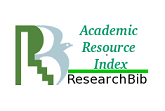External Competition Strategy Analysis And Blue Ocean Strategy Using Strategy Management Approaches
Abstract
The culinary industry contributes to the development of MSMEs in the country and requires companies to be able to increase their competitiveness, the need for a strategic management approach so that MSMEs can be competitive. Strategy formulation is used by reviewing MSMEs using the PESTLE analysis method for external environmental analysis, competitiveness analysis using the Five Force method, Ansoff Matrix method to determine market development strategies at the business unit level and Blue Ocen Strategy to determine strategies in winning the market. Data collected through interviews and observations. The results obtained show that F&B MSMEs can implement market penetration strategies by creating online stores and websites. Market development strategies can be done through Healthy Store, Retailer and consignment. Product development strategies by creating healthy subscription and journal packages, and diversifying by conducting Healthy Sessions or Workshops. From the four methods above and alternative solutions offered, it can be concluded that the most appropriate strategy to improve competitiveness is to diversify in the form of a Healthy Session or Workshop.
Full Text:
PDFReferences
David, F. R. 2009. Manajemen Strategis Konsep. Jakarta: Salemba Empat.
Rosli, M. M. 2012. Competitive strategy of Malaysian small and medium enterprises: an exploratory investigation. American International Journal of Contemporary Research, 2(1), halaman 93–105.
Teti, E., Perrini, F., & Tirapelle, L. 2014. Competitive stratetegies and value creation: A twofold perspective analysis. Journal of Management Development, 33(10), halaman 949–976.
Buchari Alma. 2004. Manajemen Pemasaran dan Pemasaran Jasa. Bandung: CV. Alfabeta.
Hanifah dkk. 2015. The Implementation of Blue Ocean Strategy to Create A Market Niche. Jurnal Manajemen Transportasi & Logistik (JMTransLog) - Vol. 02 No. 02, Juli 2015.
Heriyanto. 2016. PEST Analysis sebagai Strategi Peningkatan Pelayanan Perguruan Tinggi Keagamaan Buddha. Research Gate DOI: 10.13140/RG.2.2.16155.77608.
Sheila Julita. 2016. Analisis Strategi Bersaing PT. Sentral Motor Indonesia. AGORA, Vol. 4 No. 1, 2016.
Kolios and Read. 2013. A Political, Economic, Social, Technology, Legal and Environmental (PESTLE) Approach for Risk Identification of the Tidal Industry in the United Kingdom. Energies 2013, 6, DOI: 10.3390/en6105023, halaman 5023-5045.
Monika Strzelczyk, Monika Chłą. 2017. Use of Pestel Analysis for Assessing The Situation of Polish Transport Enterprises, Part I.
Susilo. 2018. Macro Environment Analysis of Automotive Industry in Indonesia. p-ISSN 2548-8961, e-ISSN 2548-7175, Volume 4 Nomor 2.
Kim and Mauborgne. (2019). Blue Ocean Strategy & Shift Tools. https://www.blueoceanstrategy.com/tools/
Simon. (2017). 5 Best Tools to Do Your Blue Ocean Strategy for Changing Times. https://blog.simonassociates.net/5-best-tools-to-find-your-blue-ocean-strategy
Denning. (2017). Moving To Blue Ocean Strategy: A Five-Step Process To Make The Shift. https://www.forbes.com/sites/stevedenning/2017/09/24/moving-to-blue-ocean-strategy-a-five-step-process-to-make-the shift/#5be8ca557f11
Kosyu. (2015). Perbedaan Mendasar Marketing B2B dengan B2C. https://blog.penulis.id/id/perbedaan-mendasar-marketing-b2b-dengan-b2c/
DOI: https://doi.org/10.22515/relevance.v3i2.2370
Refbacks
- There are currently no refbacks.
















